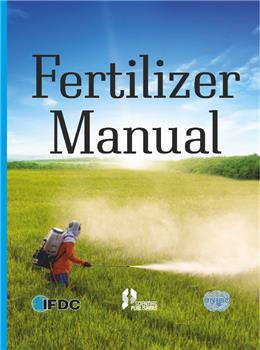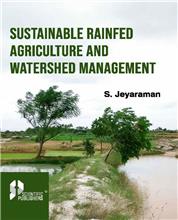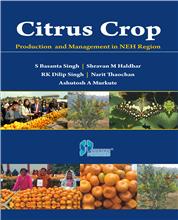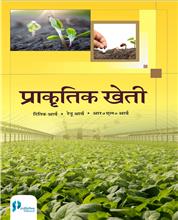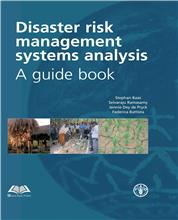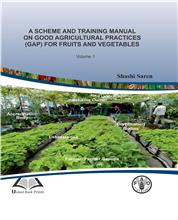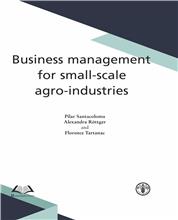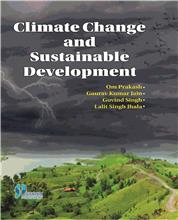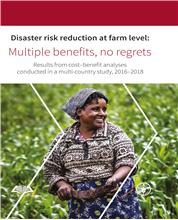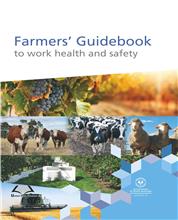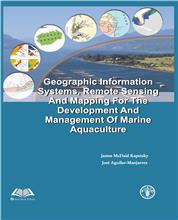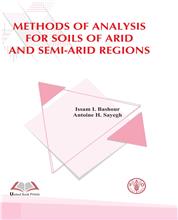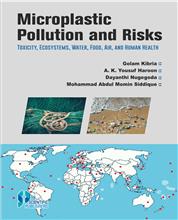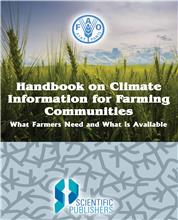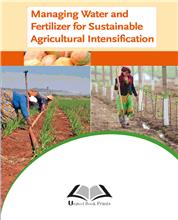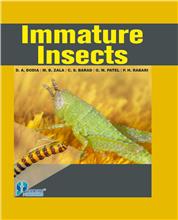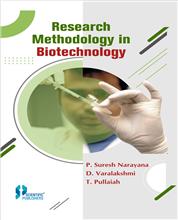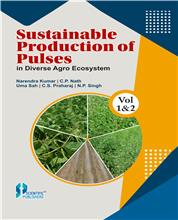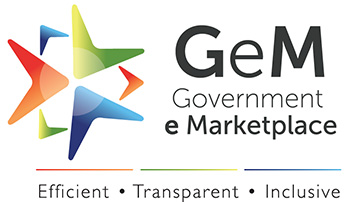Chapter 1. General Concepts, Classification, Terminology, and Definitions
1.1 Introduction
1.2 Plant Nutrients
1.3 Fertilizer Grade
1.4 Nutrient Availability
1.5 Fertilizer Regulations
1.6 Fertilizer Specifications
1.7 Tenriinology and Definitions
1.8 Fertilizer-Related lnfomiation Sources
1.9 Resource Publications
Chapter 2. The Role of Fertilizers in Ag'riculture
2.1 Demand for Agricultural Products and Plant Nutrients 20
2.2 The Soil Resource
2.3 Concepts of Soil
2.4 Fundamentals of N, P, and K
2.5 Diagnosis of Nutrient Problems
2.6 Profitable Fertilizer Use
2.7 Soil Productivity and Sustainability
2.8 References
Chapter 3. Status of the Fertilizer Industry
3.1 Short History of Fertilizer Development
3.2 Statistical Overview of Fertilizer Production, 1960-95
3.3 Statistical Overview of Fertilizer Consumption, 1960-95
3.4 Trends in Fertilizer Trade
3.5 Trends in Fertilizer Prices
3.6 Emerging Centers of Fertilizer Production
3.7 Industry Restructuring in Older Producing Areas
3.8 References
Chapter 4. Outlook for the Fertilizer Industry, 1995-2005
4.1 Introduction
4.2 Recent Economic and Political Developments and Their Impact on
the Fertilizer Industry
4.3 Future Outlook for Fertilizer
4.4 Future Outlook for Fertilizer Supply
4.5 Fertilizer Supply-Demand Balances
4.6 Summary
4.7 Price Outlook
4.8 References
Chapter 5. Fertilizer Raw Materials and Reserves
5.1 Availability and Sources of Raw Materials
5.2 Nitrogen
5.3 Phosphate
5.4 Sulfur
5.5 Potash
5.6 References
Chapter 6. Production of Ammonia
6.1 Ammonia Early Process Development
6.2 Physical Properties of Ammonia
6.3 Feedstock for Ammonia
6.4 Production Technology of Ammonia
6.5 Partial Oxidation Process of Heavy Hydrocarbons
6.6 Ammonia From Coal
6.7 Ammonia From Electrolytic Hydrogen
6.8 Economics-of Ammonia Production
6.9 Future Development of Ammonia Technology
6.10 References
Chapter 7. Transportation and Storage of
7.1 Introduction
7.2 Ammonia
7.3 Transportation of
7.4 References
Chapter 8. Nitric Acid, Nitrates, and Ammonium
8.1 Introduction
8.2 Nitric Acid
8.3 Ammonium Nitrate
8.4 Pollution
8.5 Production of Calcium Ammonium Nitrate
8.6 Other Nitrogen Compounds Used as Fertilizers
8.7 References
Chapter 9. Urea
9.1 Introduction
9.2 Properties of Urea
9.3 Process Operating Variables
9.4 Urea Processes
9.5 Urea Finishing Processes
9.6 Economics
9.7 References
Chapter 10. Liquid Fertilizers and Nitrogen Solutions
10.1 Introduction
10.2 Nitrogen
10.3 Fluid Phosphates
10.4 Suspension Fertilizers
10.5 Specialty Fluid Fertilizers
10.6 Investment Costs
10.8 References
Chapter 11. Sulfuric and Phosphoric Acids
11.1 Sulfuric Acid
11.2 Wet-Process Phosphoric Acid
11.3 Superphosphoric Acid
11.4 Shipment of Phosphoric Acid
11.5 Use of Byproduct Gypsum
11.6 Utilization of Fluorine
11.7 Uranium Extraction
11.8 Purification of Phosphoric Acid
11.9 Production of Phosphoric Acid Using Acids Other Than Sulfuric
11.10 Phosphoric Acid Production by the Electric Furnace Process
11.11 Phosphoric Acid Production by the Blast—Fumace Process
11.12 Wet-Process
11.13 References
Chapter 12. Fertilizers Derived From Phosphoric
12.1 Introduction
12.2 Triple Superphosphate
12.3 Ammonium Phosphates
12.4 Nongranular MAP
12.5 Ammonium Polyphosphate
12.6 Comparative Economics of TSP and DAP
12.7 Other Fertilizers Made From Phosphoric Acid
12.8 Process Licensors and Contractors
12.9 References
Chapter 13. Nitrophosphate Fertilizers
13.1 Introduction
13.2 Fundamentals of Nitrophosphates
13.3 Nitrophosphate Processes
13.4 Odda Process With Calcium Precipitation
13.5 The Mixed~Acid Process
13.6 Other Processes
13.7 Advantages and Disadvantages of the Nitrophosphate Route
13.8 Development in Quantities and Market Share
13.9 References
Chapter 14. Other Phosphate Fertilizers
14.1 Single Superphosphate
14.2 Phosphate Rock as a Fertilizer
14.3 Basic Slag
14.4 Potassium Phosphates
14.5 Bone Meal
14.6 Fused Calcium Magnesium Phosphate
14.7 Rhenania Phosphate
14.8 Calcium Metaphosphate
14.9 Dicalcium Phosphate
14.10 Magnesium Phosphates
14.11 Urea Superphosphate (USP)
14.12 References
Chapter 15. Potash Fertilizers
15.1 Introduction
15.2 Potash in Agriculture
15.3 Potash Production, Consumption, and Price
15.4 Product Quality
15.5 Other Potassium Fertilizers
15.6 Chemical-Grade Potash
15.7 References
Chapter 16. Compound Fertilizers
16.1 Introduction
16.2 Trends in Supply and Demand for Compound Fertilizers
16.3 Role of Compound Fertilizers
16.4 Compound Fertilizer Production Technology
16.5 Physical and Chemical Parameters for Producing Agglomerated NPKs
16.6 Processes for Manufacturing Compound Fertilizers
16.7 Unique Requirements for Manufacturing Urea-Based Granular
Compound Fertilizers
16.8 Investment and Operating Costs
16.9 References
Chapter 17. Secondary Nutrients and Micronutrients
17.1 Secondary Nutrients
17.2 Micronutrients
17.3 Preparation of Fertilizers Containing Micronutrients
17.4 Other Useful Elements
17.5 Acknowledgment
17.6 References
Chapter 18. Physical Properties of Fertilizers
18.1 Introduction
18.2 Physical Properties of Solid Fertilizers
18.3 Physical Properties of Fluid Fertilizers
18.4 References
Chapter 19. Environmental Protection and Pollution Prevention
19.2 Environmental Issues Related to the Use of Fertilizers
19.3 Environmental Impact of the Fertilizer Industry
19.4 Phosphogypsum
19.5 Environmental lmpact Assessment
19.6 The Role of lntemational Organizations
19.7 Best Available Technology (BAT)
19.8 ISO 14000
19.9 References
Chapter 20. Planning for the Development of a Fertilizer Industry
20.1 Introduction
20.2 Strategies and Policies of Fertilizer Industry Development
20.3 Estimates of Demand and Requirements
20.4 Establishment and Development of the Fertilizer Industry
20.5 Paving the Way to Plant Operation
20.6 References
Chapter 21. Economics of Fertilizer Manufacture
21.1 Introduction
21.2 The Structure of Investment Costs
21.3 The Structure of Production C0sts
21.4 Financial Analysis
21.5 Economic Analysis
21.6 Use of Computers for Financial Economic Analysis
21.7 Guidelines for Achieving Well-Established Projects
21.8 References
Chapter 22. Challenges Facing the Fertilizer Industry
22.1 Introduction
22.2 Resolution of Macroeconomic Contradictions
22.3 Fertilizer Production Capacity and Demand
22.4 Transformation From Public to Private
22.5 Establishment of New Facilities
22.6 Potential for Reducing Fertilizer Costs
22.7 General Conclusions
22.8 References
